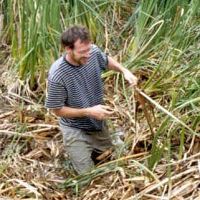Kelly et al., 2011
Water and carbon cycling along the Sierra Nevada climate gradient.
Kelly, A.E., Goulden, M., Meadows, M.W., Bales, R.C., Winston, G. (2011)
Fall meeting, American Geophysical Union, December 2011, Halls A-C, 8:00 AM. Abstract B41A-0203.
-
Sierra, GRAD STUDENT
-
Sierra, INVESTIGATOR
-
Sierra, STAFF
-
Sierra, INVESTIGATOR
Abstract
Conifer forests dominate the western slope of the southern Sierra Nevada above 1000 m elevation. The climate of this region is Mediterranean, with hot dry summers and cool wet winters. The lower elevations of the conifer belt receive most precipitation as rain, while the upper elevations receive nearly all precipitation as snow. We have found that the differences in temperature and precipitation regime along the gradient affect interactions between water and carbon balance at seasonal and annual scales. Timing, degree of drought stress, and cold limitation along the western slope of the Sierra drive critical differences in biomass, productivity, carbon allocation, carbon turnover rates, seasonality of production, and seasonality and rates of evapotranspiration. We measured eddy covariance, weather, sap flux, biomass, productivity, and soil moisture at four sites along an elevation transect from 400 to 2700 m within the Southern Sierra Critical Zone Observatory (SSCZO). At lower elevations, summer drought and mild winters produce low biomass, high turnover, winter-productive forests. At high elevations, cold snowy winters and short mild summers produce low biomass, low turnover, summer-productive forests. At mid elevations, cool winters and warm summers produce high biomass forests, including giant sequoia groves, with a year-round growing season.
Citation
Kelly, A.E., Goulden, M., Meadows, M.W., Bales, R.C., Winston, G. (2011): Water and carbon cycling along the Sierra Nevada climate gradient. Fall meeting, American Geophysical Union, December 2011, Halls A-C, 8:00 AM. Abstract B41A-0203. .
Explore Further




